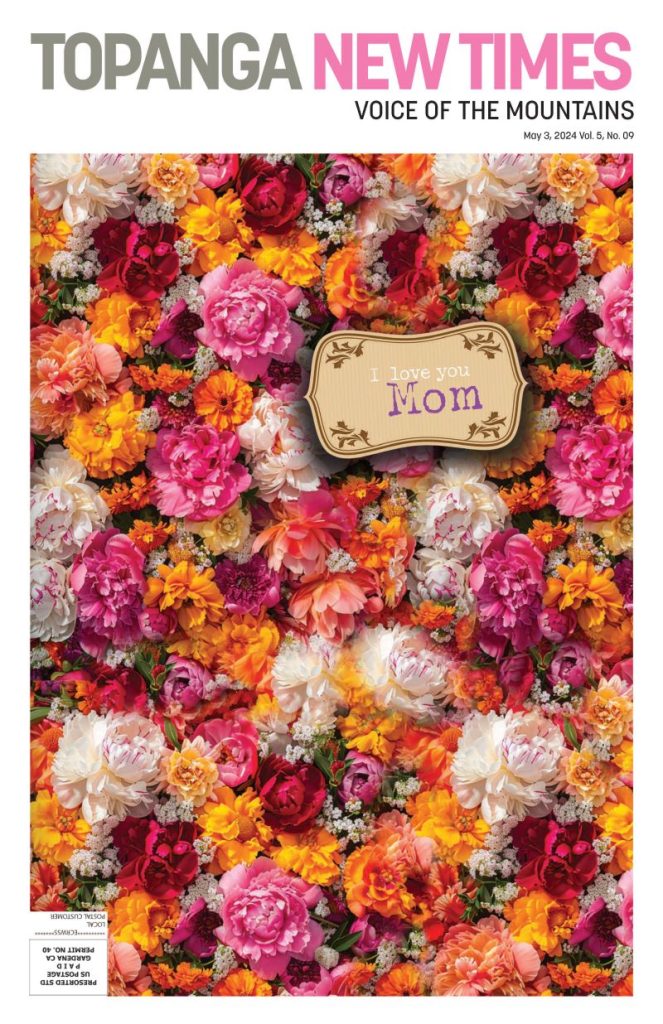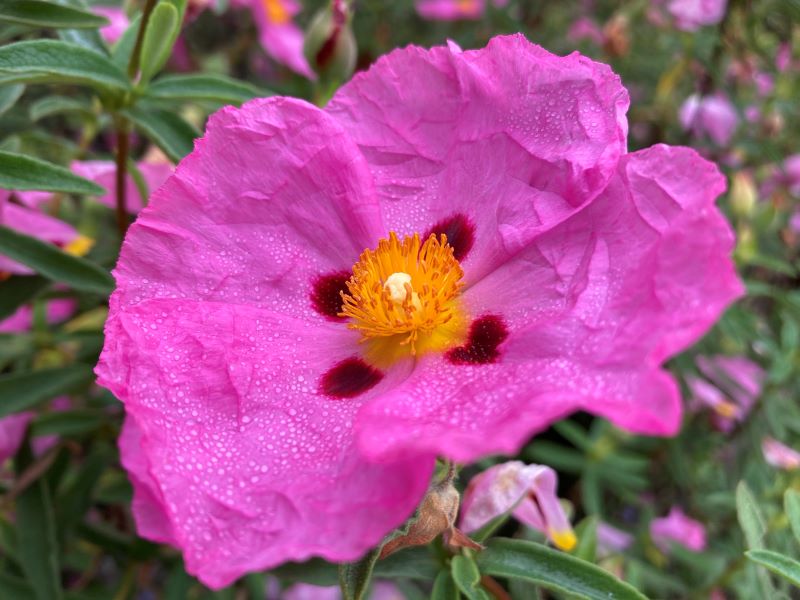
Happy Mother’s Day! May is the month to celebrate the mothers, grandmothers, aunts, older sisters, mother figures, and female mentors who have been a positive influence on our lives. Thank you for everything you do—we wouldn’t be the people we are today without you. Cover concept and design by Urs Baur.
May is here and the rainy season is finally winding down, but Topanga Canyon Boulevard will remain closed throughout the summer and into the fall. The most recent estimate is that Caltrans expects to remove as much as 7,500 truckloads of dirt, and that can only begin to happen once the slide dries out enough to allow work to safely begin. The first phase of the project is a barrier to keep debris out of environmentally sensitive Topanga Creek.
The size and complexity of the landslide means that there is no quick or easy way to remedy the problem. That is the official word from Caltrans. It may not look like it in the photographs, but this is a truly massive landslide, one that is still active and potentially deadly.
Some residents, frustrated by the slow pace, have argued that the state’s experts are wrong about the size and nature of the slide and that the delay is rooted in red tape, not geologic constraints. Here at TNT we are reminded of the winter of 1979, when Pacific Coast Highway was closed for several weeks at Big Rock because of a slide, and political pressure resulted in Caltrans dynamiting a large boulder that was seen as holding up progress. It brought the whole mountain down. The coast route was closed for months. The moral of that story? “Be careful what you wish for…”
That said, residents are encouraged to write to Governor Gavin Newsom to make sure the state remains aware of the devastating impact of the closure on canyon residents and businesses. The governor has the power to declare a state of emergency, which could free up funds for our struggling community and especially for the canyon’s local businesses. The problem is—so far, at least—that the governor’s office does not regard the situation as an emergency. Will he change his mind if enough people make enough noise? There’s one way to find out: send a message at www.gov.ca.gov/contact/
Endemic creek species, including the Southern steelhead trout, the imperiled Western pond turtle, and the increasingly rare California newt, are also part of the complex issues surrounding landslide mitigation. All of these species require clean, clear water, and silt and mud are a major contamination problem. That’s why exclusion fencing is being installed before other work begins at the TCB slide. Most of us will never see any of these species in the wild, even when that wild is in our own backyard, but they still depend on us to keep them safe. The road closure is a hardship for humans, but the removal process also impacts wildlife. Meeting state environmental requirements is important, even if it may be inconvenient.
The Southern steelhead trout, once abundant in places like Topanga and Malibu, now almost extinct, has just received endangered species status from the California Fish and Wildlife Commission. Whether the move has come in time to save the species remains uncertain—fewer than 200 steelhead have reportedly been spotted in the past 25 years—but the designation is an important victory for a critically endangered species.

The Southern steelhead also figures in another significant conservation story. The Washington Post is reporting that a 170,000-acre section of the San Gabriels may soon be added to San Gabriel National Monument. This is the part of the range that forms the backdrop for Los Angeles. It was left out of the original National Monument, created by President Obama in 2014, and encompassing 342,177 acres of the Angeles National Forest and 4,002 acres of neighboring San Bernardino National Forest.
According to the Post, President Biden may soon add this significant part of the Southern California landscape to the National Monument. All of our local mountain ranges are part of a complex, interconnected web of wildlife and plant biodiversity. Finding ways to protect existing habitat and reconnect fragmented habitat is key to the survival of species like the mountain lions of the Santa Monica Mountains, and the steelhead trout that have gone from abundant to almost extinct in less than a human lifetime.
The new designation would align with the President’s commitment to 30×30—protecting 30 percent of the nation’s remaining open space by 2030. It would provide more protections and more federal funding for conservation, restoration, and recreation. It would also ensure that an important part of the “Rim of the Valley”—the green space that encircles the Los Angeles Basin and connects places like Tujunga Canyon with places like Topanga Canyon—remains open space in perpetuity. That’s something that will benefit not just the people and wildlife in that wildland interface, but everyone—and everything—in the greater Los Angeles area.
Stay safe, be well. Happy May!













